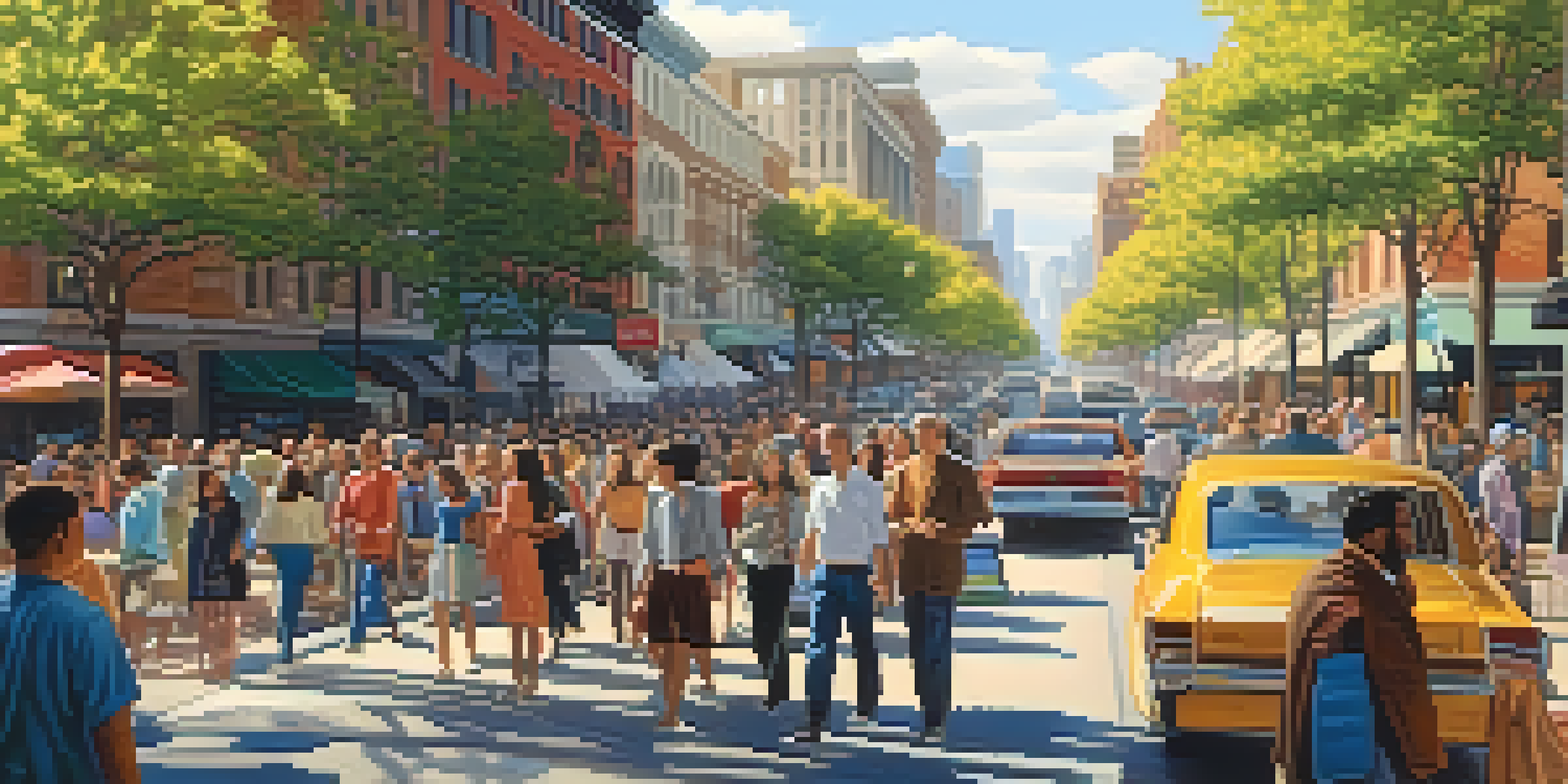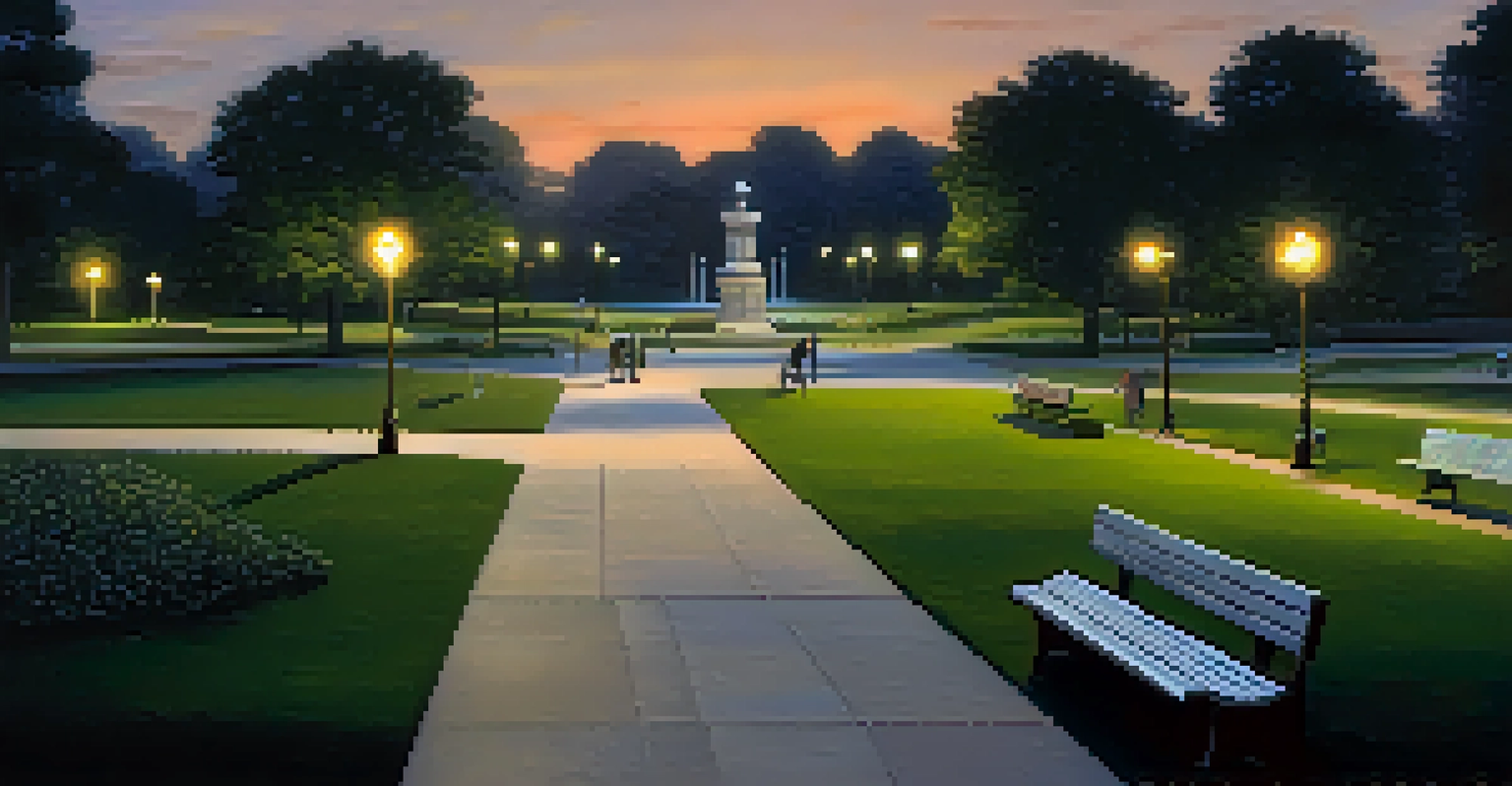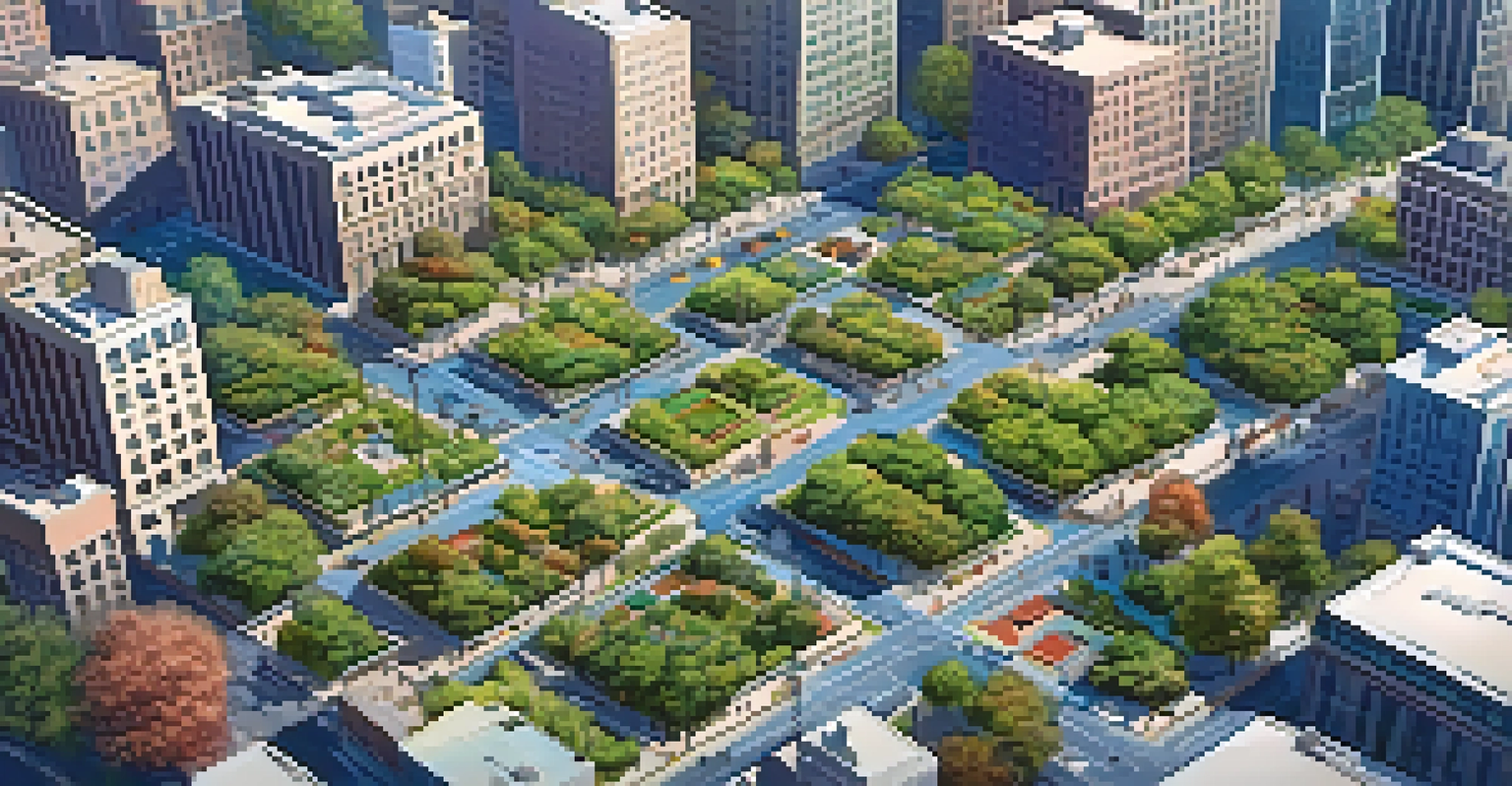Environmental Factors in Self Defense: Urban Contexts

The Role of Urban Layout in Self Defense Strategies
Urban environments are often characterized by their dense layouts, which can significantly impact self-defense tactics. The arrangement of streets, buildings, and public spaces can either facilitate or hinder escape routes during a confrontation. For instance, narrow alleys might provide hiding spots, but they can also trap individuals in dangerous situations.
The best defense is a good awareness of your surroundings.
Moreover, the presence of landmarks and open spaces like parks can influence the choices a person makes when trying to defend themselves. A well-lit park may serve as a refuge, while a dark alley could become a place of vulnerability. Understanding these layout dynamics is crucial for anyone looking to improve their self-defense skills.
Related Resource
In essence, urban layout not only affects how individuals navigate their surroundings but also how they prepare for potential threats. By analyzing the environment, one can develop effective strategies that leverage the unique characteristics of urban spaces.
Influence of Population Density on Self Defense Choices
Population density plays a pivotal role in shaping self-defense decisions in urban settings. In crowded areas, the sheer number of people can deter potential attackers, as the likelihood of witnesses increases. However, this same density can also lead to heightened anxiety and a sense of vulnerability due to the unpredictability of the crowd.

For example, during busy events or rush hour, an individual may feel more secure due to the presence of many others. Yet, the chaos can also make it harder to identify threats or escape swiftly. Understanding these dynamics empowers individuals to make informed choices about when and how to defend themselves.
Urban Layout Impacts Self Defense
The design of urban environments can significantly affect escape routes and self-defense strategies.
Ultimately, awareness of population density is essential for developing situational awareness. By recognizing how crowded environments influence behavior, individuals can better prepare themselves for potential self-defense scenarios.
Lighting Conditions and Their Impact on Safety
Lighting is a crucial environmental factor that significantly affects self-defense in urban areas. Well-lit streets can enhance feelings of safety and allow individuals to see potential threats from a distance. Conversely, poorly lit areas may create opportunities for criminal activity, making it vital to avoid these spots when possible.
In a world where you can be anything, be kind—but also be aware.
Consider a scenario where someone is walking home at night; the presence of streetlights can provide reassurance, while dark corners can increase anxiety. This underscores the importance of being aware of one’s surroundings and choosing routes that maximize visibility.
Related Resource
In short, understanding how lighting affects personal safety can lead to smarter navigation decisions. By prioritizing well-lit pathways, individuals can enhance their self-defense readiness and reduce vulnerability.
Urban Noise Levels and Their Effects on Awareness
Urban noise levels are another environmental factor that can influence self-defense. High levels of background noise can mask sounds that might indicate danger, such as footsteps or raised voices. This auditory distraction can lead to a delayed response in recognizing potential threats.
For example, in a bustling city, the sounds of traffic, construction, or crowds can drown out important audio cues. This makes it essential for urban dwellers to develop a heightened sense of awareness, relying not only on sight but also on their other senses.
Population Density Affects Safety
High population density can deter attackers but may also increase anxiety and complicate threat detection.
Ultimately, being mindful of noise levels can enhance one's ability to detect danger. By training oneself to stay alert amidst the urban din, individuals can improve their self-defense awareness and response times.
The Impact of Urban Design on Escape Routes
Urban design directly influences the availability and accessibility of escape routes during a self-defense situation. A well-planned city includes multiple avenues for quick exits, such as broad sidewalks, open plazas, and clear pathways. However, poorly designed areas can create obstacles that hinder escape, trapping individuals in precarious situations.
Consider how a maze-like design with dead ends can leave a person feeling cornered. In contrast, a grid layout with clear sightlines and multiple pathways allows for easier navigation and quick exits. Understanding these design elements can greatly enhance an individual's readiness to respond effectively in a crisis.
Related Resource
In conclusion, awareness of urban design is critical for personal safety. By recognizing which areas offer safer escape routes, individuals can make smarter choices that prioritize their well-being in potentially dangerous situations.
Cultural Attitudes Towards Self Defense in Cities
Cultural attitudes towards self-defense vary greatly across urban areas, impacting how individuals perceive and react to potential threats. In some cities, self-defense is viewed as a necessary skill, while in others, it may carry stigma or be discouraged. This cultural backdrop can shape personal beliefs about the appropriateness of defending oneself.
For instance, in communities where crime rates are high, residents may be more inclined to take self-defense classes and adopt proactive measures. Conversely, in areas with lower crime rates, people may feel less compelled to focus on self-defense training. Understanding these cultural nuances is essential for anyone looking to engage with their urban environment safely.
Community Resources Enhance Preparedness
Local organizations and initiatives can provide valuable self-defense training and foster community support.
Ultimately, recognizing the cultural context can inform one's approach to personal safety. By aligning self-defense strategies with local attitudes, individuals can navigate their surroundings with greater confidence.
Community Resources for Self Defense in Urban Areas
Communities often provide a range of resources that can enhance self-defense preparedness in urban settings. Local organizations may offer self-defense classes, workshops, or seminars that equip residents with the necessary skills and knowledge. Engaging with these resources can foster a sense of empowerment and community support.
For example, a neighborhood watch program can encourage residents to look out for one another, creating a collective approach to safety. Additionally, community centers might host events that promote awareness of local crime trends and effective self-defense strategies. Such resources can significantly bolster individual and collective safety.

In summary, leveraging community resources is a smart strategy for enhancing personal safety. By participating in local initiatives, individuals can gain valuable skills while fostering a sense of camaraderie with their neighbors.